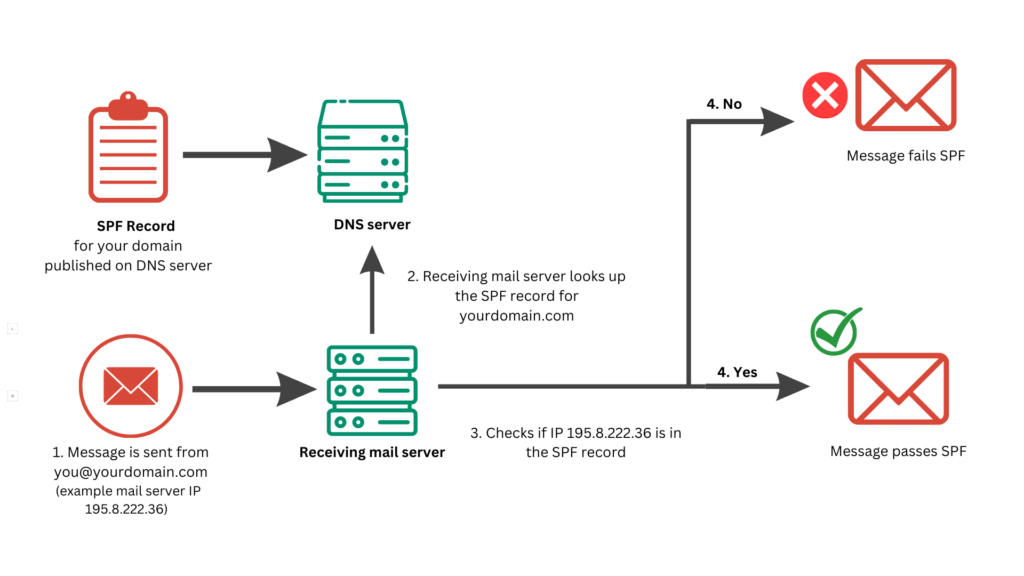Check Domain Blacklist Status Easily
Mail Blacklist Checker
| Blacklist Service | Status |
|---|
Superior support
MailProvider's dedicated support team is available 24/7, ensuring you never miss a beat.
Hosted in Luxembourg
MailProvider uses advanced security measures to protect your accounts from any potential threats or attacks.
Guaranteed email delivery
With MailProvider's flawless IP reputation, your emails are guaranteed to reach their destination seamlessly.


Im more than happy to help you setup your SPF records according to the highest standards.
Paige Lowery, Support Hero
Blacklist Inquiry
Check if your domain is on a blacklist
You can use the Blacklist query tool for domain names or IP addresses whose blacklist status you want to learn.
Type the domain name or IP address you want to learn the blacklist status in the field above and click the query button. Use Blacklist for Secure Email Communication
Some of our other free email tools
SPF Checker
SPF Checker is a tool that verifies whether a domain's SPF (Sender Policy Framework) record is correctly configured to prevent email spoofing.
SPF Record Creator
SPF Record Creator is a tool that helps generate the correct SPF record for a domain to authorize specific mail servers to send emails on its behalf.
Mx Record Checker
MX Record Checker is a tool that verifies and retrieves the Mail Exchange (MX) records of a domain to ensure proper email delivery setup.
DKIM Record Checker
DKIM Record Checker is a tool that validates the presence and correctness of a domain's DKIM (DomainKeys Identified Mail) record to ensure email authentication and integrity.
DMARC Record Checker
This is a tool that verifies the existence and validity of a domain's DMARC (Domain-based Message Authentication, Reporting, and Conformance) record to ensure email authentication and policy enforcement.
Whois Domain Checker
Whois Domain Checker is a tool that retrieves detailed information about a domain's ownership, registration, and expiration status by querying the Whois database.
NS Checker
NS Checker is a tool that verifies the nameserver (NS) records for a domain to ensure proper DNS configuration and resolution.
Mail Blacklist Checker
Mail Blacklist Checker is a tool that checks if an IP address or domain is listed on any email blacklists, which can affect email deliverability and reputation.
IP Address Checker
IP Address Checker is a tool that provides information about a specific IP address, including its location, ISP, and other relevant details.
Secure email that
protects your privacy
Help Center
Questions? Answers.
Quick answers to questions you may have. Can't find what you're looking for? Check out our full documentation.
A blacklist is a list of IP addresses, domains, or email addresses identified as sources of malicious or unwanted activities, such as spamming or phishing. Being listed on a blacklist can negatively impact the sender's ability to deliver emails successfully to recipients.
A blacklist is used by email servers, ISPs, and security systems to block emails, IP addresses, or websites associated with suspicious activity. It helps protect networks from spam, phishing attacks, and other threats by filtering communication from blacklisted sources.
Yes, exiting a blacklist is possible, but it depends on the reasons for being blacklisted. Many blacklist services offer removal processes, which often involve identifying and fixing the issue (e.g., removing malware or stopping spam) and then submitting a request for de-listing. Some blacklists automatically remove listings after a period of clean behavior.
Blacklist querying is essential for maintaining email deliverability and protecting your domain's reputation. If your domain or IP address is blacklisted, your emails may be blocked or marked as spam. Regularly checking whether you are blacklisted ensures prompt action if your domain or IP is listed, reducing potential email deliverability problems.
Email security is critical because email is a primary target for cyberattacks like phishing, malware, and spamming. Protecting email communications ensures that sensitive data is not exposed and prevents unauthorized access to your accounts or network. Secure email practices help safeguard against data breaches and financial losses.
To block spam emails, you can use the following methods:
- Implement email filtering systems that identify and block spam.
- Use DNSBL (DNS-based blackhole lists) or blacklists that detect spammers.
- Employ anti-spam software or email security services.
- Enable DMARC, SPF, and DKIM email authentication protocols to prevent email spoofing.
- Regularly update security settings and block known spammers in your email server.
A DNSBL (Domain Name System-based Blackhole List) is a list of domains or IP addresses that are known to send spam or other malicious content. DNSBL services allow email servers to check incoming emails against these lists to block emails from blacklisted sources, enhancing email security.
You can find out if you're blacklisted by using blacklist checking tools or performing DNS queries. Tools like blacklist checkers can quickly identify if your IP address or domain is listed on major DNSBLs or email blacklists. Regular monitoring helps you maintain email deliverability and security.
Various entities can be blacklisted, including:
- IP Addresses: Often blacklisted if found to be involved in spamming or malicious activities.
- Email Domains: If emails from a domain are flagged as spam, the domain itself can be blacklisted.
- URLs or Websites: Websites spreading malware or involved in phishing can be blocked by search engines and security services.
- Phone Numbers: Numbers used for spam calls or messages can also be blacklisted.
